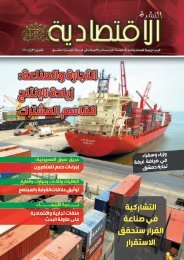SIGAR
2017-01-30qr
2017-01-30qr
You also want an ePaper? Increase the reach of your titles
YUMPU automatically turns print PDFs into web optimized ePapers that Google loves.
SECURITY<br />
In addition to directly contracting for specialized training, DOD reported<br />
on the use of open-ended training agreements with the U.S. military to<br />
provide Afghan training or professional development. 300 According to DOD,<br />
FY 2016 funding was used mainly for pilot, special forces, and MOD training<br />
and advisors, alongside these open-ended training agreements. 301 The<br />
largest of these projects are multiyear contracts that include an $80.9 million<br />
project to train Afghan Air Force pilots, another $41.8 million project<br />
for out-of-country training for AAF pilots, and a $65.3 million project to<br />
train Afghan special forces. A recently completed $30.5 million project<br />
trained MOD advisors. 302<br />
During this quarter, MOD train-the-trainers completed radio encryption<br />
training. 303 According to Afghan media, 1,200 cadets graduated from<br />
a 10-month program at the Kabul Military Training Academy. 304 According<br />
to CSTC-A, for every month of International Military Education Training<br />
funded training, the ANA cadet is required to complete three months of<br />
extra service. 305<br />
Afghan Air Force and the Special Mission Wing<br />
As of November 20, 2016, the overall assigned strength of the Afghan Air<br />
Force (AAF) including civilians was 7,912 personnel. 306 Compared to the<br />
same reporting period last year, AAF strength has increased by 11.6%, or<br />
820 personnel. 307<br />
As of November 15, 2016, the United States has appropriated more than<br />
$4.2 billion to support and develop the AAF since FY 2010. Additionally,<br />
DOD requested over $508 million—mostly for AAF sustainment costs—in<br />
the FY 2017 budget justification document. 308 Since FY 2010, just over $3 billion<br />
has been obligated for the AAF, with roughly $26.6 million of FY 2017<br />
funds obligated as of November 15, 2016. The majority of the funding since<br />
FY 2010 has been dedicated to sustainment items, which account for 46.8%<br />
of obligated funds, followed by equipment and aircraft at 36.5%. 309 However,<br />
with the exception of FY 2015, training costs in recent years have exceeded<br />
or been similar to the equipment and aircraft costs. 310<br />
The AAF’s current inventory of aircraft includes: 311<br />
• 3 Mi-35 helicopters<br />
• 46 Mi-17 helicopters<br />
• 27 MD-350 helicopters<br />
• 24 C-208 utility airplanes<br />
• 4 C-130 transport airplanes<br />
• 20 A-29 light attack airplanes (12 are in the United States supporting<br />
AAF pilot training) 312<br />
This quarter, USFOR-A reported two Mi-17 helicopters had been lost<br />
in combat: one, attributed to technical problems, occurred on November<br />
29 in Badghis and killed the 207th Corps commander; and the other, on<br />
108<br />
SPECIAL INSPECTOR GENERAL I AFGHANISTAN RECONSTRUCTION







